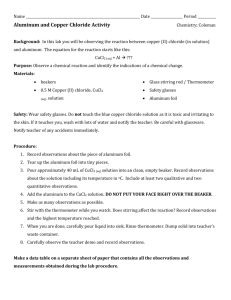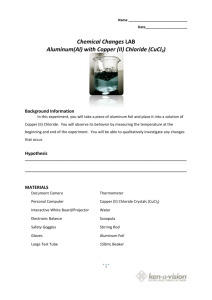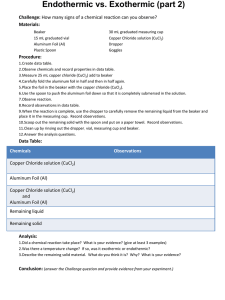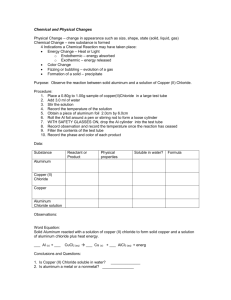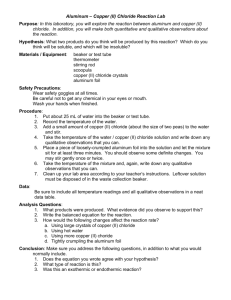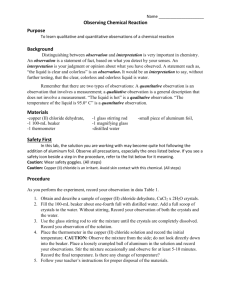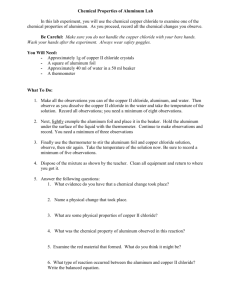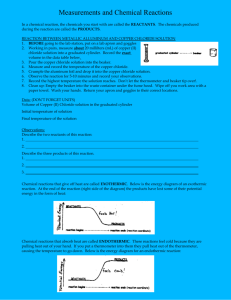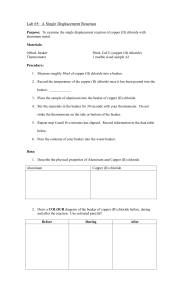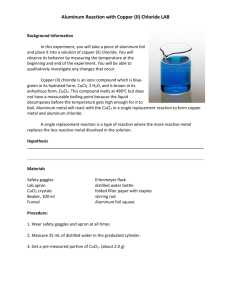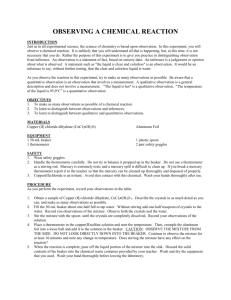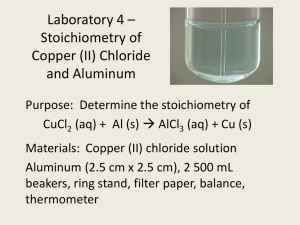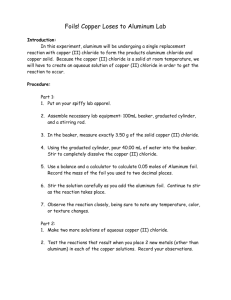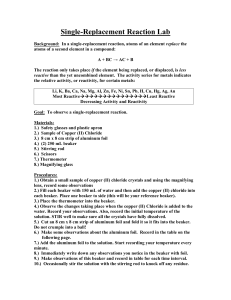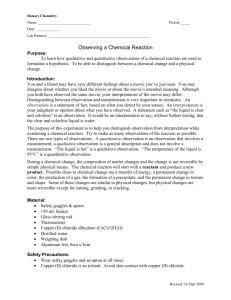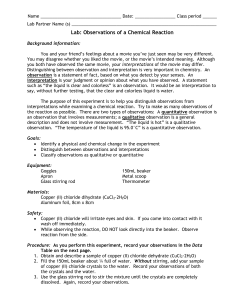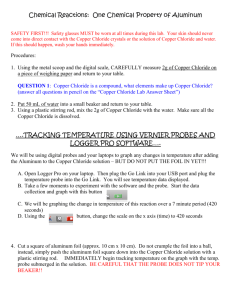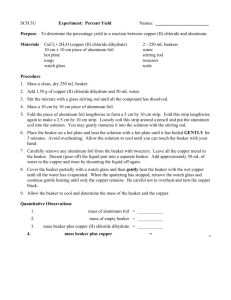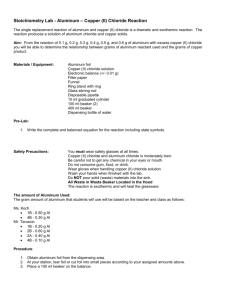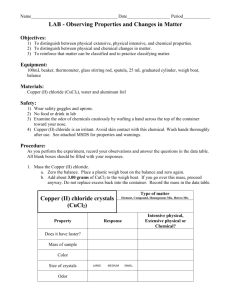Obs_a_chem_rxn13
advertisement
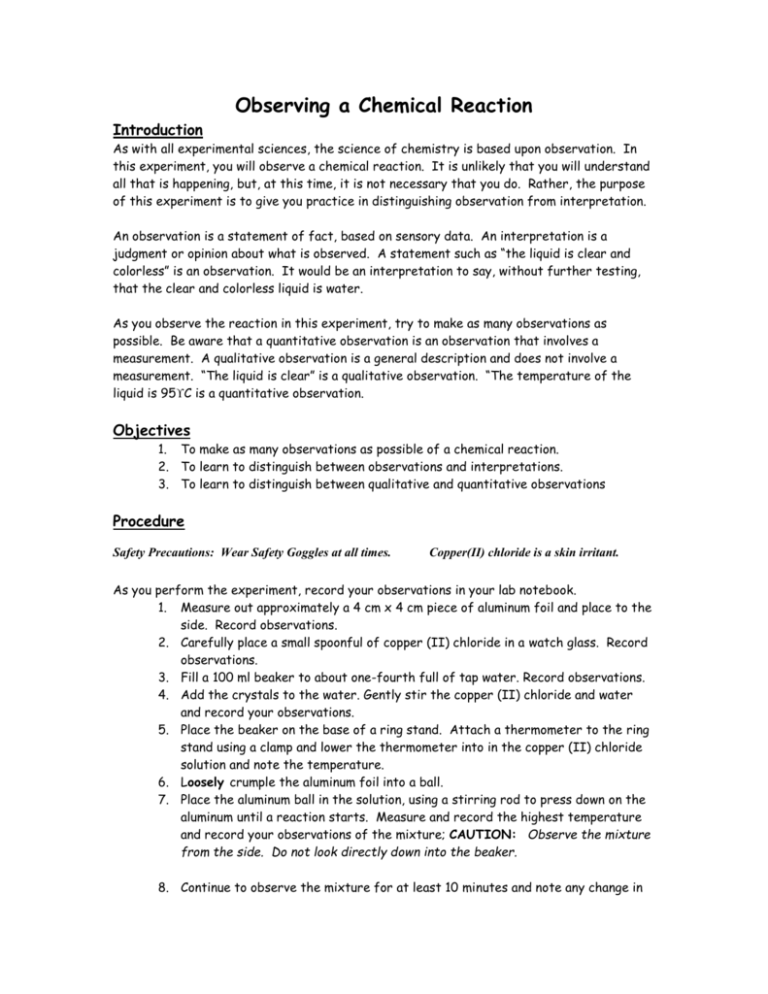
Observing a Chemical Reaction Introduction As with all experimental sciences, the science of chemistry is based upon observation. In this experiment, you will observe a chemical reaction. It is unlikely that you will understand all that is happening, but, at this time, it is not necessary that you do. Rather, the purpose of this experiment is to give you practice in distinguishing observation from interpretation. An observation is a statement of fact, based on sensory data. An interpretation is a judgment or opinion about what is observed. A statement such as “the liquid is clear and colorless” is an observation. It would be an interpretation to say, without further testing, that the clear and colorless liquid is water. As you observe the reaction in this experiment, try to make as many observations as possible. Be aware that a quantitative observation is an observation that involves a measurement. A qualitative observation is a general description and does not involve a measurement. “The liquid is clear” is a qualitative observation. “The temperature of the liquid is 95C is a quantitative observation. Objectives 1. To make as many observations as possible of a chemical reaction. 2. To learn to distinguish between observations and interpretations. 3. To learn to distinguish between qualitative and quantitative observations Procedure Safety Precautions: Wear Safety Goggles at all times. Copper(II) chloride is a skin irritant. As you perform the experiment, record your observations in your lab notebook. 1. Measure out approximately a 4 cm x 4 cm piece of aluminum foil and place to the side. Record observations. 2. Carefully place a small spoonful of copper (II) chloride in a watch glass. Record observations. 3. Fill a 100 ml beaker to about one-fourth full of tap water. Record observations. 4. Add the crystals to the water. Gently stir the copper (II) chloride and water and record your observations. 5. Place the beaker on the base of a ring stand. Attach a thermometer to the ring stand using a clamp and lower the thermometer into in the copper (II) chloride solution and note the temperature. 6. Loosely crumple the aluminum foil into a ball. 7. Place the aluminum ball in the solution, using a stirring rod to press down on the aluminum until a reaction starts. Measure and record the highest temperature and record your observations of the mixture; CAUTION: Observe the mixture from the side. Do not look directly down into the beaker. 8. Continue to observe the mixture for at least 10 minutes and note any change in temperature. Does stirring the mixture have any effect on the reaction? 9. When the reaction is complete, empty the contents of the beaker into the chemical waste container provided by your teacher. 10. Wash and dry the equipment that you used. Wash your hands thoroughly before leaving the classroom. Observations System Aluminum foil (Al) Copper (II) chloride (CuCl2) Water (H2O) Copper (II) chloride and water after stirring (CuCl2 & H2O) Copper(II) chloride, water and aluminum foil Immediately (CuCl2 , Al & H2O) Copper(II) chloride, water and aluminum foil After Reacting (CuCl2 , Al & H2O) Observations Temperature (C) Analysis of Observations 1. What is the difference between an observation and an interpretation. Check your observations. Eliminate any that are interpretations rather than observations. 2. Circle any observation that is quantitative data. 3. A thermometer placed in the beaker can be used to determine whether the reaction released heat or absorbed heat? Endothermic Reactions absorb heat and a solution will decrease in temperature. Exothermic Reactions release heat and a solution will increase in temperature. Was the reaction exothermic or endothermic? Explain why (how could you tell).
